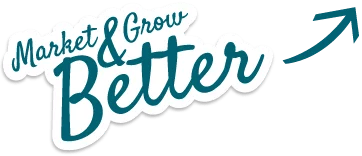After spending a week at HubSpot’s 2019 INBOUND conference we learned A LOT. An event held annually to bring thousands of marketing and sales professionals from around the world together, to sharpen their skills in digital tactics and knowledge. After a fun but intense four days of learning, we wanted to share our top takeaways from this years’ conference that help us market and grow better:
· Reducing friction in the Flywheel.
· Aligning sales and marketing.
· Content is still king.

Reducing friction in the Flywheel
In order for the inbound flywheel to perform at its best, there can’t be friction. Friction can be seen as barriers between communication with your customers, making the process for meeting their needs unnecessarily difficult or not providing the value that you should. There are several ways to reduce these types of friction within the flywheel stages:
Attract: Create a user-friendly website. Our job as marketers is to provide the customer a fool-proof way to meet their needs. A hard to navigate website inhibits your customers ability to perform a task like purchasing one of your products, you need to re-evaluate your website layout. This type of barrier can be found in various ways around your website and content. Bonus tip! Perform a content audit on your entire website so you have a thorough understanding of where you can make improvements in your customer’s experience.
Engage: Make multiple channels available to your customers where they can easily reach you for support. Create clear, easy to follow processes that customers can follow, and have backup lines of communications for multiple people in your organization to be readily available to help when needed.
Delight: Provide value to your customer. Ask yourself, “why would a customer choose me over a competitor?” Conduct a content audit to find areas of your website where you can improve the customer experience. Everybody likes free things, so build a pop-up for a free service or tool that requires a website visitor to input their information. From there, you can continue to provide value that helps your customers solve their problems through emails or blog posts. Email workflows and blog subscription are a great way to show the customer what you can do for them and prove to them they should work with you to fit their needs.
Aligning sales and marketing
Today’s best practices are aligning sales and marketing, not separating them. A divide between these two parts of your organization can create confusion in customer-facing scenarios. When they are treated separately there is a disconnect between what the sales team is communicating, and what the marketing team can provide. Have your sales and marketing teams work together to brainstorm and discuss the best messaging to use to explain what value you can provide a customer. While there is and should be a marketing to sales hand off, there will always be a need for sales and marketing to communicate until the job is done.
How does the marketing team let the sales team know there is a marketing qualified lead? How do we ensure the lead was followed up with? Defining what makes a lead worthy enough to pass to the sales team is the first step, and stakeholders from both sides of the handoff should come together to discuss and create a process for a smooth transition. Create a straightforward but in-depth process with contributions from both sides, and hold everyone accountable to staying on the agreed upon path to client success. That way, from the beginning of the sales process to the end, the messaging is consistent, and there are never any questions from your customer on what they should be getting from you.
Content is Still king
How much thought do you put into your content before creating it? Your answer should be A LOT. Content is, and still remains as the king of marketing. But there is more to content than just writing. It begins with building a plan for how it will be utilized. Ask yourself, how/where/when will this content be used, how can we make it meaningful and engaging for our persona? At what point in the buyer’s journey will this content be most useful? Keep in mind, to avoid a divide between sales and marketing make sure every piece of content can be used by sales rep and plan for it to be leveraged in multiple ways. Are you writing a blog post that will be shared on social media or emailed to your subscriber list? Can you use it as a free piece of content on your website? To create great content for yourself and for your customers, stay focused on the audience, and create a clear message to create a better experience at all stages in the content creation process. Once content has been placed, test it for how the targeted persona responds with measures like A/B testing, and engagement metrics recorded from social posts, landing pages, email, etc.
Being a HubSpot partner, we are constantly learning new tips and tools that help us market and grow better. If you aren’t a HubSpot partner, subscribe to our blog to stay ahead of the curve on all things marketing.
Topics: content marketing, Content development strategy, inbound, sales and marketing, friction






